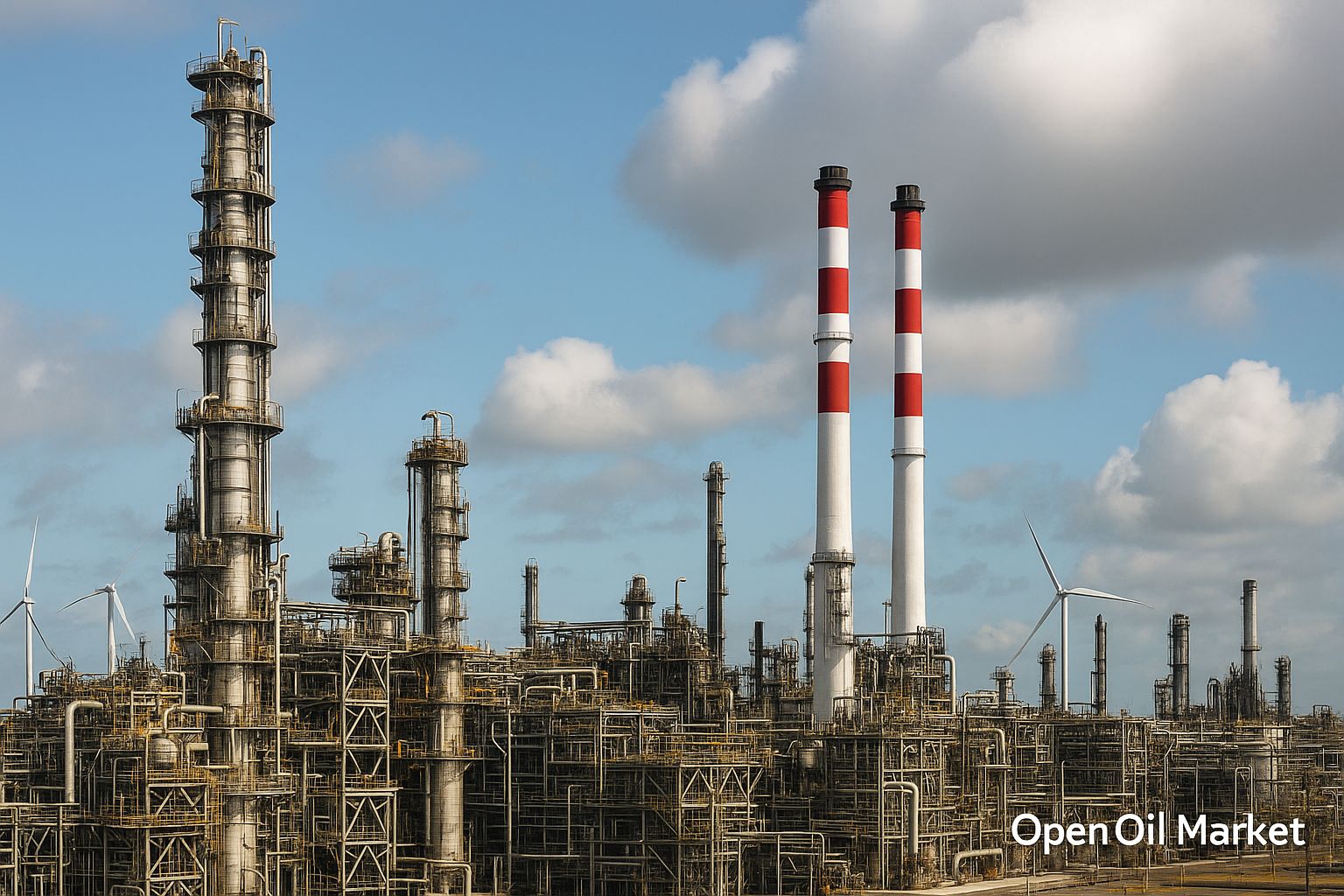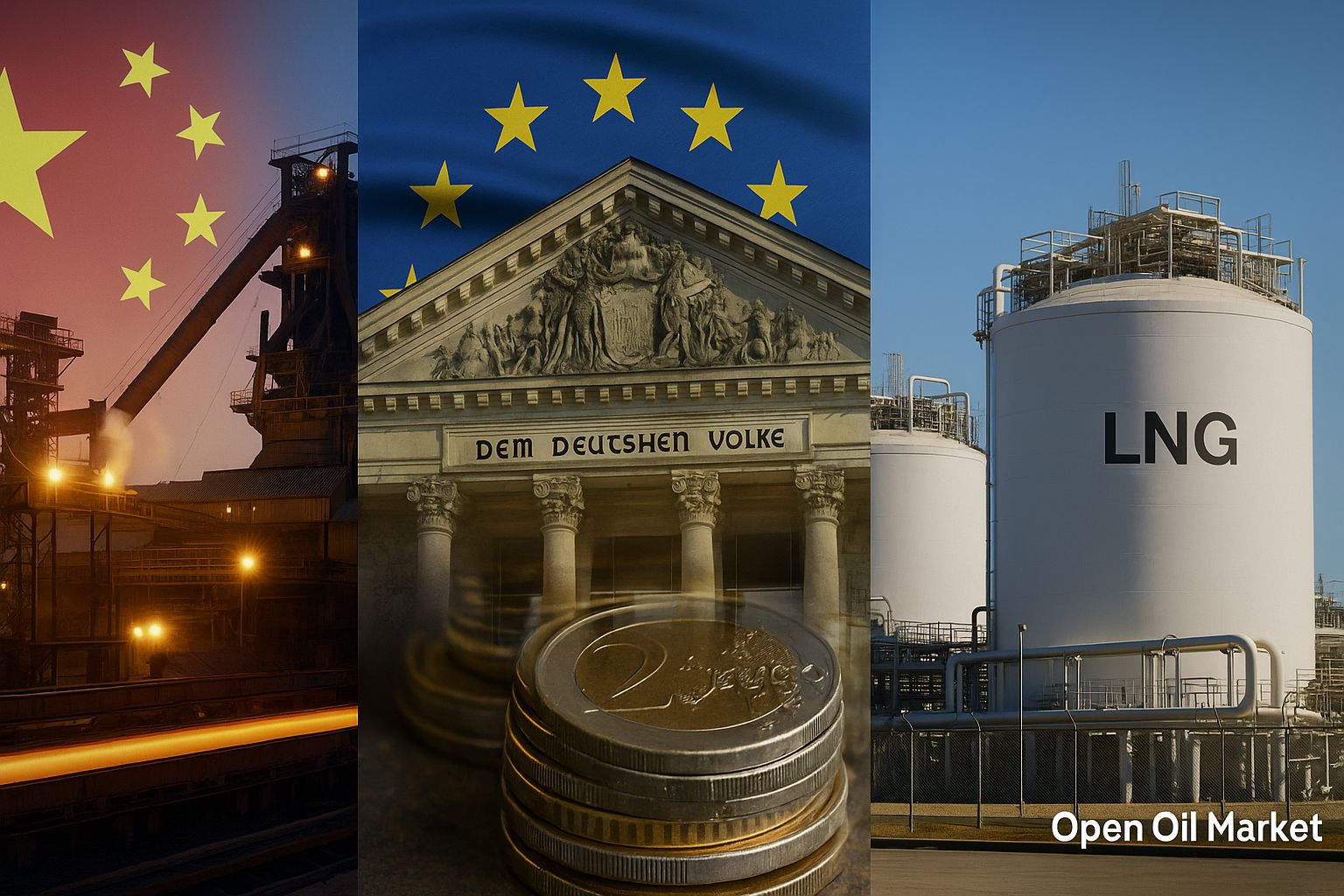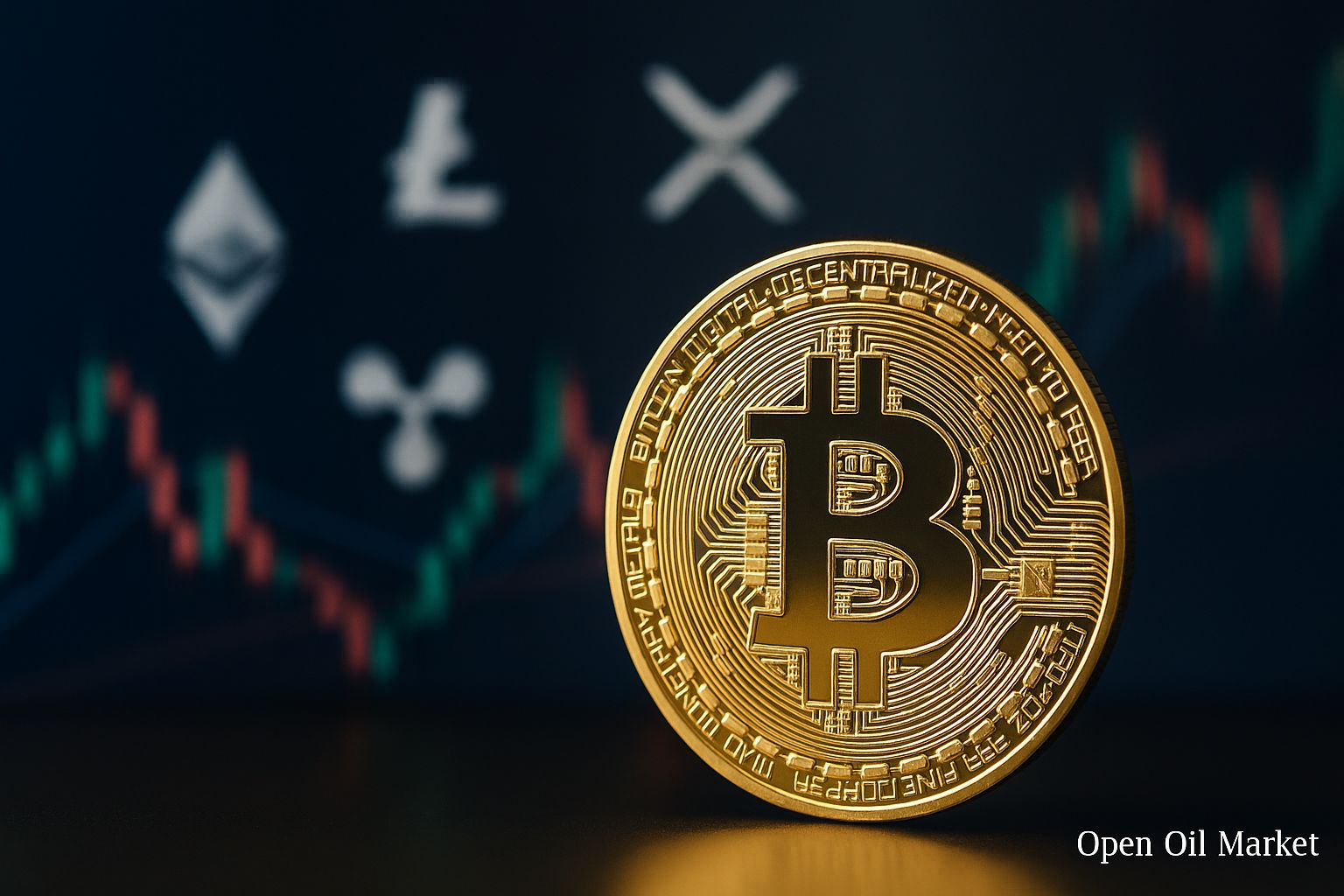
Main News of the Energy Sector as of 8 November 2025: Intense Sanction Pressure, Stable Oil Prices, Record Gas Reserves, New Renewable Energy Milestones, High Coal Demand in Asia, and Ongoing Fuel Price Stabilisation Measures in Russia.
Recent developments in the fuel and energy complex (FEC) as of this date demonstrate a mix of heightened geopolitical tensions and relative stability in commodity markets. Following various contacts between Russia and the West, no significant easing of hostilities has occurred—instead, new sanctions have been imposed, increasing risks for the energy sector. At the same time, global oil prices remain moderate, hovering around the mid-$60 per barrel mark due to coordinated actions by OPEC+ and slowing demand. The European gas market confidently anticipates winter: underground gas storage in the EU is at record levels, providing a buffer ahead of the winter months and keeping exchange prices relatively low. Concurrently, the global energy transition is entering a new phase—countries are recording new highs in electricity generation from renewable sources, although governments are yet to completely abandon traditional resources for ensuring the reliability of energy systems. In Russia, following a summer price surge, authorities continue a series of measures to stabilise the domestic market for oil products, gradually normalising the situation. Below is a detailed overview of key news and trends across the oil, gas, energy, and commodity sectors as of the current date.
Oil Market: OPEC+ Takes a Breather on Production Increases, Surplus Supply Keeps Prices in Check
Global oil prices have remained relatively stable at the beginning of November. The benchmark Brent is trading at around $64–66 per barrel, while the American WTI is in the range of $60–62. Current quotes are approximately 10–12% lower than a year ago, reflecting a gradual normalisation of the market following price spikes in previous years. The price dynamics are influenced by a combination of factors, including:
- Actions of OPEC+. The oil alliance confirmed a planned increase in production quotas by a modest +137,000 barrels per day in December, and signalled an intention to pause further increases in supply during the first quarter of 2026. This cautious approach aims to prevent market oversaturation and support prices at acceptable levels, while OPEC+ participants strive to maintain their market share.
- Weak Demand Growth. Global oil consumption is increasing slowly. According to the International Energy Agency (IEA), the demand growth in 2025 will be less than 1 million barrels per day (compared to approximately 2.5 million barrels per day in 2023). OPEC also projects modest growth of around +1.2 million barrels per day. Economic slowdowns, particularly in Europe and China, along with the effects of high prices from previous years (which encouraged energy conservation), are limiting the appetite for oil.
- Rising Stocks and Supply from Non-OPEC+. Commercial oil inventories in the US and other countries have increased in autumn, signalling an oversupply forming in the market. Additionally, some non-OPEC+ producers are ramping up exports. For example, Saudi Arabia has sharply increased its external oil supplies following the end of the hot season's domestic demand, while production in the US is nearing record levels. These factors exert upward pressure on global prices.
- Financial Conditions. The strengthening of the US dollar to a multi-month high makes commodities more expensive for buyers using other currencies, restraining demand. At the same time, central banks in developed countries maintain a cautious monetary policy, cooling business activity and fuel consumption.
Collectively, these conditions keep oil prices within an established corridor, which is beneficial for crude importers but poses new challenges for oil-producing countries. Market participants are closely monitoring OPEC+'s next moves: should market conditions change, the alliance may reconsider its production plans. For now, the outlook for the coming months remains cautiously optimistic; barring any shocks, prices are likely to stay around current levels.
Gas Market: Europe Welcomes Winter with Record Reserves and Stable Prices
The global gas market is particularly focused on Europe's readiness for the winter season. As of early November, EU underground gas storage facilities are over 95% full—this is a record figure exceeding the target levels set by regulators. This buffer, combined with a steady influx of liquefied natural gas (LNG), has kept wholesale gas prices in Europe at relatively low levels, nearly half of what they were a year ago and significantly below the peaks of 2022. A key factor has been weakened competition from Asian buyers: high reserves in China and other Asian countries have led to decreased demand for LNG in the region, allowing extra volumes to be redirected to Europe.
As a result, the European market enters winter without the usual anxiety seen in previous years. Even planned shutdowns of domestic production and repairs at Norwegian fields have been offset by an increase in imports. The EU has significantly reduced its dependence on pipeline gas from Russia, with its share in imports now down to just a few percent, thanks to new terminal constructions and long-term contracts for LNG supplies. Analysts note that under normal weather conditions this winter, gas supply will remain adequate, and prices will be moderate. However, maintaining this balance will depend on several factors: potential temperature anomalies in the winter months and the schedule for the launch of new LNG projects worldwide. By 2026, significant gas export capacities (primarily from the US and Canada) are expected to come online, which may lead to a global surplus and further downward pressure on prices.
International Politics: Sanction Confrontation Intensifies, Creating New Risks for Energy
The geopolitical landscape surrounding energy markets has escalated in recent weeks. Following unsuccessful attempts to establish dialogue over the summer, the West has moved to intensify sanction pressure on Russia. In late October, the United States imposed new sanctions against major Russian oil companies—Rosneft and Lukoil. These measures aim to limit oil trade from the RF, with Indian and Chinese refiners given until 21 November to cease dealings with listed counterparties. In effect, Washington has signalled its readiness to tighten secondary sanctions, compelling key importers of Russian oil to reconsider their cooperation with Moscow. Concurrently, EU member states and the G7 continue to align their sanction policies. Although discussions surrounding the next package of restrictions have taken longer than expected due to the need for unanimous consent, the focus remains on curbing circumvention tactics and enhancing monitoring of compliance with established price caps on oil and petroleum products.
The sanction confrontation keeps the market in a state of uncertainty: investments in Russian projects are associated with heightened risks, and the reorientation of supply streams is not without complications. Nevertheless, global oil supply remains sufficient thanks to the redirection of Russian exports to Asia and increased supplies from other players. Experts note that energy markets have learned to adapt to the realities of sanctions: for instance, a "shadow fleet" of tankers for transporting Russian oil outside Western insurers has been established. However, new restrictions have the potential to cause targeted disruptions—from reduced investment in extraction to local logistical challenges. An additional factor of instability remains the military conflict: ongoing hostilities and episodic attacks (including on pipelines or refineries) may impact supply routes. Overall, geopolitics continues to represent a critical uncertainty for energy resource markets, necessitating heightened attention from companies and investors to potential sharp changes in trading conditions.
Asia: India Reduces Imports of Russian Oil; China Enhances Its Energy Security
Asian countries, primarily India and China, continue to play a crucial role in global energy markets, though their strategies are evolving under external pressures. India, until recently, was the largest buyer of Russian oil, actively taking advantage of discounts on this crude. However, under pressure from Washington, Indian companies are prepared to significantly cut purchases of oil from the RF. In response to US sanctions against Rosneft and Lukoil, Indian refiners are revising their contracts: the largest corporation, Reliance Industries, plans to halt imports under a long-term agreement with Rosneft, and state-owned refineries are ensuring that no shipments from sanctioned companies arrive directly from November. This implies that the volume of Russian supplies to India (averaging over 1.7 million barrels per day in January–September) will begin to decrease. New Delhi plans to replace the declining volumes with Middle Eastern and African grades; although such restructuring may increase import costs (analysts assess the potential increase in the oil bill at around 2%), it will help avoid trade tariffs and maintain access to the US market for Indian goods. Simultaneously, India is accelerating diversification: increasing domestic refining capacity and LNG imports to bolster energy security.
Conversely, China maintains high levels of imports of Russian energy resources, capitalising on the situation. After the withdrawal of European clients, Beijing has emerged as the primary purchaser of Russian oil and gas, ensuring stable demand. Reports indicate that Russian oil exports to China continue to grow: for instance, agreements between Rosneft and CNPC have allowed for an increase in oil transit through Kazakhstan by approximately 2.5 million tonnes per year. Chinese companies are also actively sourcing LNG through long-term contracts, benefiting from favourable pricing. At the same time, China is striving to reduce its dependence on imports: domestic field developments continue, and the country leads the world in deploying new capacities in solar and wind energy. In the first half of 2025, power generation from renewables in China increased sufficiently to reduce coal consumption by 2% compared to the previous year. Thus, India and China are responding differently to external challenges: India is reluctantly reducing cooperation with the RF to preserve relations with the West, while China is deepening its energy partnership with Russia while simultaneously investing in domestic extraction and 'green' energy.
Energy Transition: Record Growth in Renewables and Early Signs of Declining Coal Generation Share
The global shift towards clean energy in 2025 showcases new accomplishments. According to analysts, total electricity generation from renewable sources (solar and wind) has, for the first time, surpassed production from coal power plants. In the first half of the year, global solar generation increased by approximately 30% compared to the same period in 2024, while wind generation rose by 7–8%, covering a significant portion of the increase in electricity demand. This is a historic moment: clean energy has started to curb the growth of fossil fuel use. The rapid expansion of renewables is primarily attributed to China and India, which are quickly increasing their capacities. For comparison, while growth in renewable generation continues in Europe and the US, weather fluctuations (unusually weak winds, droughts) have led to a temporary increase in the loading of gas and coal plants. Nevertheless, the International Energy Agency forecasts that global renewable capacities will double by the end of the decade, with around 80% of new installations expected to be solar panels.
Despite record achievements in 'green' energy, traditional methods of energy production retain their importance. To ensure round-the-clock and uninterrupted electricity supply, countries utilise gas, coal, and nuclear power plants as balancing resources. Concurrently, the development of energy storage infrastructure (battery systems, pumped storage stations) continues, but their scale currently falls short of fully replacing the role of traditional generation during peak hours. For investors, this means that although decarbonisation is gaining momentum, the oil, gas, and coal sectors are expected to maintain their roles in the foreseeable future, providing baseload and energy security. At the same time, the increasing demand for equipment for renewables and power grid infrastructure opens new market opportunities, driving capital influx into the renewable energy sector.
Coal: Asian Demand Keeps the Global Market at Historically High Levels
Despite the climate agenda, the global coal market in 2025 remains extremely robust. Global coal consumption has approached record levels, only slightly below the peak of 2022. The primary drivers of demand are Asian countries. China and India continue to source significant portions of their electricity from coal generation, ensuring the baseload of their energy systems. Although the growth rates of coal consumption in these countries have slowed due to the development of renewables (in both China and India, coal power generation growth is gradually decelerating), in absolute terms, their demand remains vast. Additional momentum is provided by the developing economies of Southeast Asia (such as Indonesia, Vietnam, etc.), where the construction of new coal power plants continues to meet growing energy needs.
As a result, global coal production remains at high levels. Major exporters—such as Indonesia, Australia, and Russia—are ramping up extraction to supply Asian markets, compensating for reduced demand in Europe and North America. Prices for steam coal have fallen significantly over the past year compared to the peak levels of the crisis in 2022, yet remain attractive enough for producers. Many mining companies are recording high profits, encouraging investment in maintaining or even expanding extraction capacities. Concurrently, international pressure to combat climate change is mounting: financial institutions are increasingly reluctant to finance new coal projects, anticipating that global demand will plateau in the coming years. Thus, the coal sector currently balances short-term growth driven by Asian demand and long-term challenges related to transitioning to a low-carbon economy.
Russian Fuel Market: Stabilisation Measures and Initial Results
In the domestic fuel segment of Russia, following a summer price crisis, the situation is gradually coming under control due to emergency government measures. In August, wholesale prices for petrol and diesel reached historic highs (exchange quotes for Ai-95 petrol exceeded 80,000 rubles per tonne), leading to local shortages in several regions. The causes of the spike were a combination of factors: seasonal increases in fuel consumption, reduced payments under the damping mechanism, several unforeseen shutdowns at refineries (including due to drone attacks), and the profitability of exports, which prompted companies to cut deliveries to the domestic market. In response, authorities imposed export restrictions on oil products: vertically integrated companies faced a ban on exporting petrol and diesel until the end of September, while independent producers and traders had the ban extended until the end of October. Oil companies have been instructed to prioritise directing their products to domestic consumers; schedules for repairs at major refineries have been adjusted to avoid downtime during peak demand periods. Additionally, fuel supplies to problematic regions (such as the Far East and Crimea) have increased, helping to alleviate imbalances.
By early November, these measures began to yield results. Wholesale prices have decreased from peak levels: compared to mid-August, petrol has decreased by about 8%, and diesel by 5–6%. Retail prices have stabilised; according to Rosstat, the price increase at petrol stations since the beginning of the year is around 8%, which, while above inflation, has not risen in recent weeks. The government states that the situation is normalising, and there are no fuel shortages at filling stations. At the same time, it has been decided to adjust the parameters of the damping mechanism—expanding the range of price deviations at which oil refiners receive compensation. This move will allow refineries to receive payments even at higher domestic prices, reducing the incentive to redirect products for export. Commentary: "Regulators are essentially forced to accommodate oil companies; otherwise, the sector won't be able to supply the market with fuel stably. Raising the damping threshold is a justified measure, albeit it carries risks of accelerating inflation, but in the current conditions, it is unavoidable. This decision will make price increases more predictable and prevent acute fuel shortages," industry experts note.
It is expected that as long as state control is maintained, fuel price growth in the second half of the year can be kept within acceptable limits. Export restrictions will be gradually eased—only after the domestic market is fully saturated and reserves are created. Authorities also consider the introduction of protective duties on the export of oil products in the future, if necessary, to keep prices in check domestically. Thus, the energy leadership aims to balance support for refiners with protecting consumer interests, gradually moving the fuel market out of a stressful state.




